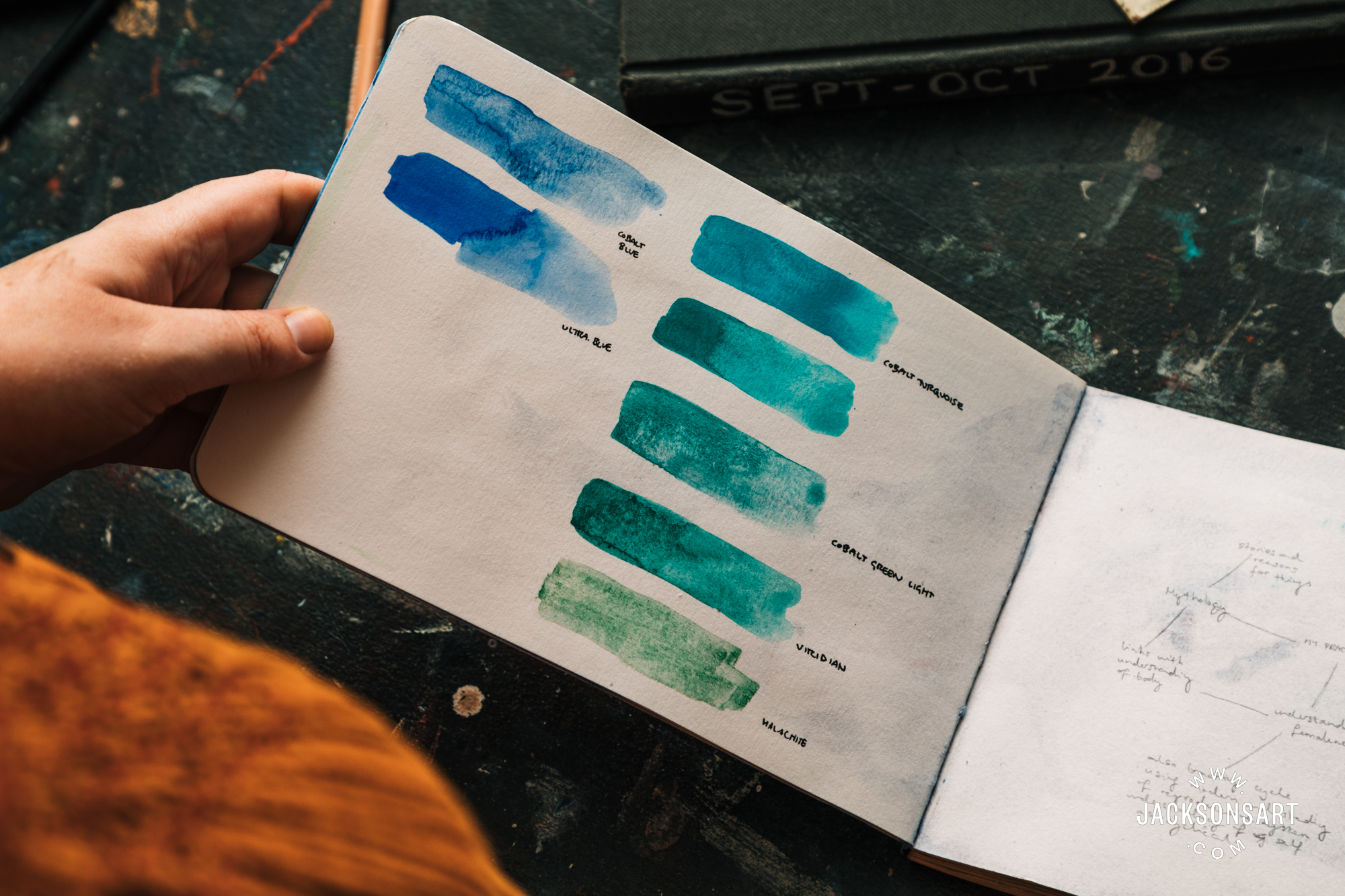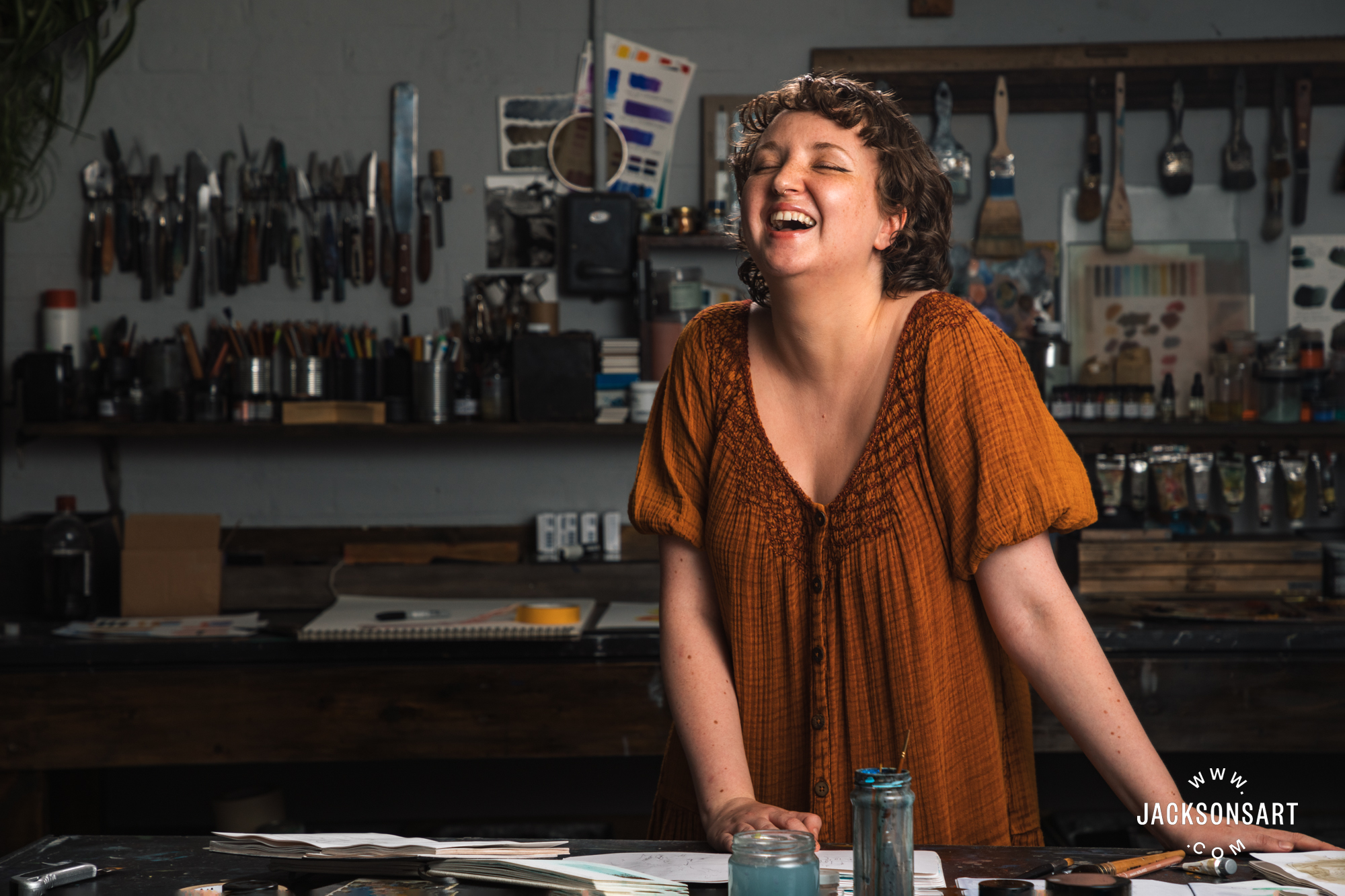Inside the Sketchbook of Evie Hatch
Evie Hatch is an artist and writer whose sketchbook practice traverses her investigations into drawing, painting, pigments and paint making, as well as recording day-to-day notes. You may already be familiar with Evie from her writing here on the blog, so we’re thrilled to feature a deeper look into her personal practice and share her pragmatic and intimate advice on her use of sketchbooks.

Evie Hatch takes us through her sketchbook practice
Looking back, I think I grew up with a sketchbook practice. Both of my parents kept sketchbooks, diaries, and notebooks to document, remember, and record, so it was natural that I would do the same in my own way. I remember at primary and secondary school we were given flimsy little ‘rough books’– so-named to suggest that there was no expectations of presentation. They were for scribbling in, doodling, trying out pens, passing notes, drawing hearts around the names of classmates we liked– anything we wanted. Without knowing it we were all keeping sketchbooks, we just weren’t given the language to reflect that.

My practice is very materials-led, and it is particularly led by pigments and their characteristics. I make most of my own paints with dry pigment and linseed oil (to make oil paint) or gum arabic (to make watercolour). Making paint gives you so much control over its texture, consistency, and strength. I love the control it gives you over the paint. Making paint can be time-consuming, but because I paint quickly it’s very beneficial to have part of the process that slows me down, increasing time for decision-making. I think it makes me a better painter.

My sketchbook is where I test and record all of my watercolour paints, whether handmade or from a tube. When I’m painting in my sketchbook I make sure I note what colours I’m using, the pigment index numbers and, if from a tube, the brand name. Details like this make it easy to remember what works and what doesn’t. If I choose to translate something from my sketchbook to an oil painting, I can be really informed about what pigments I use.


I usually use one sketchbook at a time and Stillman & Birn sketchbooks are my go-to choice, particularly the Beta series which contains 270 gsm cold pressed, off white paper. I use a lot of watercolour so I prefer a heavyweight paper that won’t buckle. I tend to alternate between the 8 x 10 in portrait and 8.5 x 5.5 in landscape sizes. I prefer the softcover versions of their sketchbooks– the hardcover ones are more sturdy but I just love the velvety feel of the softcover!

Occasionally I’ll have a sketchbook for a particular medium or occasion. For example, a whole book for silverpoint drawing, an old drawing technique of using a silver stylus on a prepared abrasive ground. If I’m going on a big holiday I like to dedicate a whole sketchbook to it.

My oil paintings are often quite small, so I find it useful to prepare a page by drawing around a panel and lining the edges with masking tape. In this way I can make ‘mini’ paintings that can easily be translated into an oil painting. Most things in my sketchbooks don’t get translated into paintings. though. I don’t subscribe to the idea of a sketchbook always being a place of preparation for ‘the real thing’. The pages can be works in themselves.

I don’t take my sketchbook everywhere. Most of my sketchbook work is done in my studio, at home, or when I go to a museum or gallery. There is nothing better than an afternoon at the National Gallery or Tate Britain with my sketchbook drawing from a Titian, a Rembrandt or a Fragonard. I could lose myself for hours. By repeating a drawing over and over again certain elements begin to lose meaning and become abstracted, until new meanings and narratives begin to form. These drawings are what sow the seeds for a new painting. Last year I began studying Art History at the Courtauld Institute in London. The academic study of paintings of the past has informed my own work, but equally my artistic practice informs my approach to the subject. The first step before writing an essay is drawing the work I’m writing about in my sketchbook– it’s an exercise in looking that means I notice things I hadn’t seen before.

My sketchbook pages are also home to various mundane things– shopping lists, to-do lists, dreams, nightmares, notes-to-self, whatever I need to write down. I prefer to integrate everything into one place, rather than have different sketchbooks for different purposes running concurrently. Looking back at old sketchbooks, it’s actually these banalities that really provide a snapshot of a particular moment in time. It also helps remind me not to be precious about sketchbooks– there are no rules about what they can contain.

I can’t stress enough the importance of dating sketchbooks. When I fill one, I label the spine with acrylic paint so I can identify when it was started and when it was completed. It’s surprising how easy it is to forget when a sketchbook was used. One thing I struggle with is starting a new sketchbook. It’s my least favourite part– cracking the spine and being confronted with pages and pages of blank space is daunting! One of the ways I get around this is opening a random page and starting there. It takes away some of the pressure of making that first mark on the first page.

Sketchbooks are an immediate and vital part of my practice. Everyone has a different relationship with their sketchbooks– different habits, different materials, and different approaches. This is what makes them the most intimate portrait of an artist.
Materials I use:
Stillman & Birn Beta Softcover Sketchbooks
Jackson’s Artist Pigments
Roberson Dry Pigments
Gum Arabic Solution
Daniel Smith Watercolours
Winsor & Newton Permanent White Gouache
Koh-i-Noor Retractable Pencil
Caran D’ache Luminance Pencils
Low-tack Masking Tape
Golden Silverpoint Ground
Silverpoint
About Evie Hatch
Evie moved to London in 2013 to study Drawing at Camberwell College of Art and has stayed ever since, painting from her studio in Brixton. She has been an art writer at Jackson’s since 2019, contributing articles relating to pigments, their properties, and how they have been used throughout history. This year Evie graduated from the Courtauld Institute of Art, London, with a Graduate Diploma in Art History. She will be returning in the autumn to study for a Masters specialising in art of the European Middle Ages.

Further Reading
Inside the Sketchbook of Kay Gasei
Making Handmade Watercolours With Jackson’s Artist Pigments
Developing a Daily Drawing Practice With the Royal Drawing School
Making Your Own Oil Paint With Jackson’s Pigments
Shop sketchbooks on jacksonsart.com




